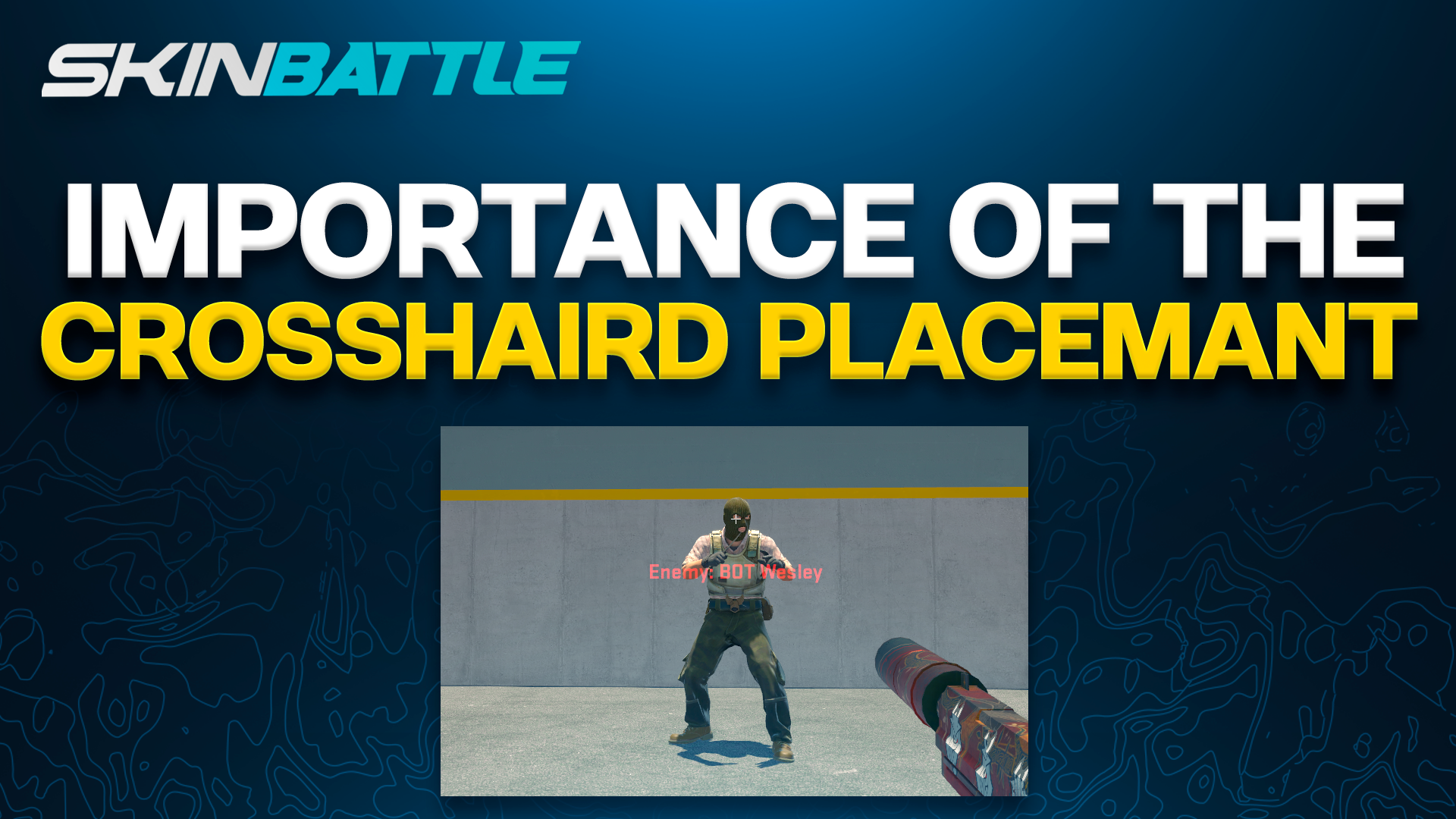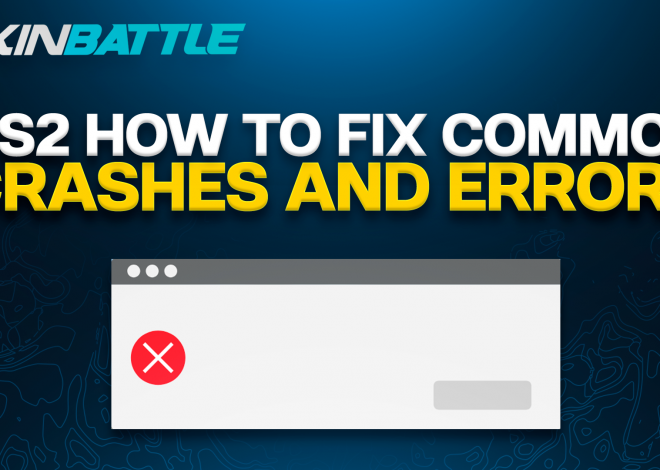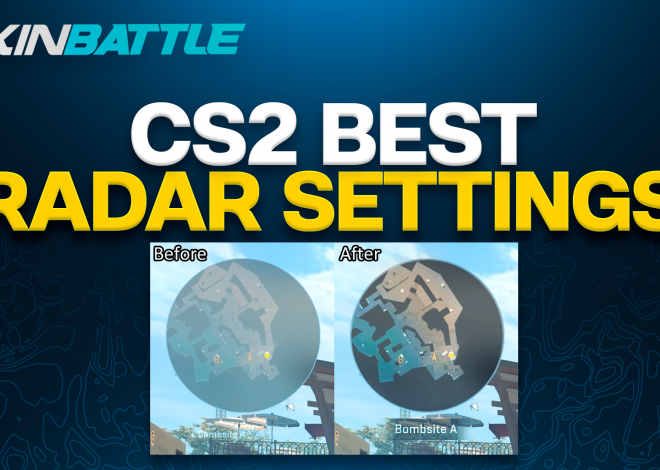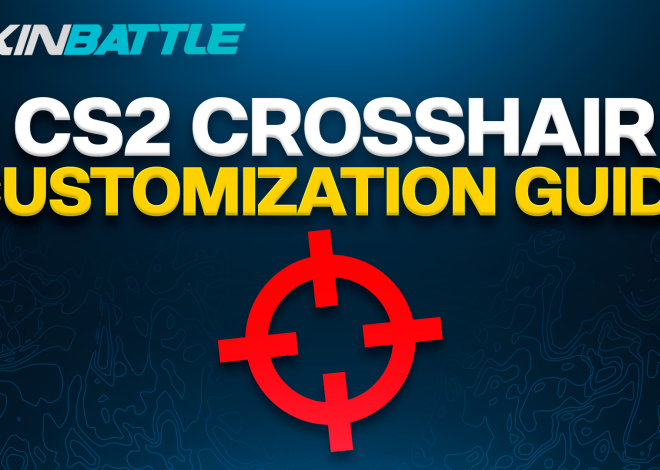
The Importance of Crosshair Placement in CS2
Introduction
Crosshair placement is not just about aiming; it’s about anticipation, strategy, and positioning. By keeping your crosshair at head level and pre-aiming common enemy positions, you can gain a significant advantage in engagements. However, achieving optimal crosshair placement requires more than just mechanical skill; it demands a deep understanding of map layouts, game mechanics, and enemy behavior.
In this article, we’ll delve into the importance of crosshair placement in CS2 and explore strategies to improve your skills in this critical aspect of gameplay. Whether you’re a seasoned veteran or a newcomer to the world of Counter-Strike, mastering crosshair placement is essential for unlocking your full potential in CS2.
Understanding Crosshair Placement
Defining Crosshair Placement
Crosshair placement refers to the strategic positioning of your aiming reticle (crosshair) on the screen while playing CS2. It involves keeping your crosshair at head level and anticipating enemy movements to ensure you’re always ready to land precise shots.
Role in Aiming Accuracy and Efficiency
In CS2, where split-second decisions can determine the outcome of a round, crosshair placement plays a pivotal role in aiming accuracy and efficiency. By maintaining proper crosshair placement, players can minimize the time it takes to acquire targets and increase their chances of securing kills.
Importance in Pre-Aiming and Anticipating Enemy Positions
One of the key aspects of crosshair placement is pre-aiming, which involves positioning your crosshair at common enemy entry points or angles before engaging in combat. This preemptive approach allows players to react more quickly to enemy movements and increases their chances of landing headshots. Effective pre-aiming not only improves individual performance but also contributes to team success by providing valuable information and support.
Moreover, crosshair placement is essential for anticipating enemy positions and movements. By aligning your crosshair with potential enemy locations, such as corners, doorways, or bombsites, you can be better prepared to respond to threats and maintain control over crucial areas of the map.
Common Mistakes in Crosshair Placement
Effective crosshair placement is crucial for success in CS2, but many players often fall victim to common mistakes that hinder their performance. Recognizing and rectifying these errors can significantly improve your gameplay. Here are some of the most frequent pitfalls in crosshair placement:
- Holding the crosshair too high or too low: One of the most common mistakes is failing to maintain the crosshair at head level. If your crosshair is positioned too high or too low, you’ll struggle to land accurate shots on opponents’ heads, resulting in missed opportunities and potential deaths.
- Failing to keep the crosshair at head level: Consistently keeping your crosshair at head level is essential for maximizing your chances of landing headshots. However, many players neglect this fundamental aspect of crosshair placement, leading to decreased aiming efficiency and reduced effectiveness in engagements.
- Neglecting to adjust crosshair placement based on map and situation: Crosshair placement should vary depending on the map layout and the specific situation you’re facing. Failing to adjust your crosshair placement accordingly can leave you vulnerable to enemy ambushes and make it challenging to maintain control over key areas of the map.
These common mistakes in crosshair placement can have significant consequences, such as missed shots, unnecessary deaths, and lost rounds. By actively focusing on improving your crosshair placement and avoiding these errors, you can enhance your aiming accuracy, increase your chances of winning engagements, and ultimately contribute more effectively to your team’s success.
Tips for Improving Crosshair Placement
Mastering crosshair placement is essential for achieving success in CS2, and there are several strategies and techniques you can employ to enhance your skills in this critical aspect of gameplay. Here are some practical tips to help you improve your crosshair placement:
1. Keep Crosshair at Head Level
Maintaining your crosshair at head level is paramount for maximizing your chances of landing headshots on opponents. Whether you’re holding an angle or navigating through the map, always strive to keep your crosshair positioned at the height of your opponents’ heads. This proactive approach ensures that your shots are more likely to connect with critical hitboxes, increasing your overall effectiveness in engagements.
2. Pre-Aim at Common Enemy Positions and Angles
Anticipating enemy movements and pre-aiming at common positions and angles can give you a significant advantage in gunfights. Study the maps and familiarize yourself with typical enemy positions and common peeking angles. By pre-aiming at these spots as you navigate through the map, you’ll be better prepared to react quickly and accurately when engaging opponents, giving you a crucial edge in battles.
3. Regularly Practice Crosshair Placement Drills and Exercises
Consistent practice is key to refining your crosshair placement skills and ingraining good habits. Dedicate time to practicing specific crosshair placement drills and exercises designed to challenge and improve your accuracy. Focus on scenarios that mimic real in-game situations, such as peeking corners, holding angles, and clearing bombsites. By incorporating regular practice sessions into your routine, you’ll gradually develop muscle memory and sharpen your ability to place your crosshair precisely where it needs to be.
4. Utilize Aim Training Maps and Workshops
Take advantage of aim training maps and workshops available in CS2 to hone your crosshair placement skills in a controlled environment. These resources offer various exercises and scenarios designed to improve your aim and precision. Experiment with different maps and exercises to target specific areas for improvement, such as flick shots, tracking, and crosshair placement. Consistent practice on aim training maps can help you develop a more intuitive sense of crosshair placement and elevate your overall aiming proficiency.
5. Review and Analyze Your Gameplay
After each play session, take the time to review and analyze your gameplay, paying close attention to your crosshair placement in different situations. Identify any instances where your crosshair placement could have been improved or where you may have fallen into bad habits. Reflecting on your performance and actively seeking opportunities for improvement will help you refine your crosshair placement skills over time and become a more formidable player in CS2.
By implementing these tips and strategies into your gameplay, you can elevate your crosshair placement skills and gain a competitive edge in CS2. Remember to stay patient and consistent in your practice, as mastering crosshair placement is a gradual process that requires dedication and perseverance.
Importance of Map Knowledge and Game Sense
In CS2, having a deep understanding of map layouts and honing your game sense are crucial elements that complement effective crosshair placement. Here’s why:
Understanding Map Layouts and Common Enemy Positions
- Navigating the Terrain: Familiarizing yourself with map layouts allows you to navigate the environment more efficiently, positioning yourself strategically and minimizing exposure to potential threats.
- Identifying Common Enemy Positions: Knowing common enemy positions enables you to pre-aim at key areas where opponents are likely to appear, ensuring that your crosshair placement is always optimized for potential engagements.
- Gaining Tactical Advantage: Exploiting your knowledge of map layouts can give you a tactical advantage over your opponents, allowing you to anticipate their movements and set up ambushes or defensive positions accordingly.
Anticipating Enemy Movements and Engagements
- Predicting Enemy Behavior: Developing game sense enables you to anticipate enemy movements and engagements based on factors such as sound cues, teammate callouts, and map control.
- Reacting Proactively: With heightened game sense, you can react proactively to enemy actions, adjusting your crosshair placement and positioning to capitalize on opportunities or defend against incoming threats.
- Maintaining Situational Awareness: Game sense helps you maintain situational awareness, allowing you to make informed decisions and adapt to changing circumstances in real-time.
Utilizing Game Sense to Predict and React to Enemy Actions
- Reading the Game: Effective crosshair placement is often a result of astute game sense, allowing you to read the flow of the game and anticipate enemy movements before they happen.
- Positioning and Timing: Leveraging your game sense, you can position yourself strategically and time your engagements for maximum impact, catching opponents off guard and gaining the upper hand in gunfights.
- Enhancing Overall Performance: By integrating map knowledge and game sense with your crosshair placement skills, you can enhance your overall performance in CS2, becoming a more versatile and formidable player on the battlefield.
Conclusion
In conclusion, mastering crosshair placement in CS2 is essential for improving your gameplay and gaining a competitive edge. By understanding the fundamentals of crosshair placement, avoiding common mistakes, and implementing practical tips for improvement, players can enhance their aiming accuracy and efficiency on the battlefield. Additionally, incorporating map knowledge and game sense into crosshair placement strategies further enhances overall performance and situational awareness. As a CS2 fan and player, taking the time to analyze and refine crosshair placement skills can lead to noticeable improvements in gameplay, resulting in more successful engagements and increased success in matches. By prioritizing crosshair placement and continuously striving to improve in this area, players can maximize their potential and achieve greater success in CS2.


